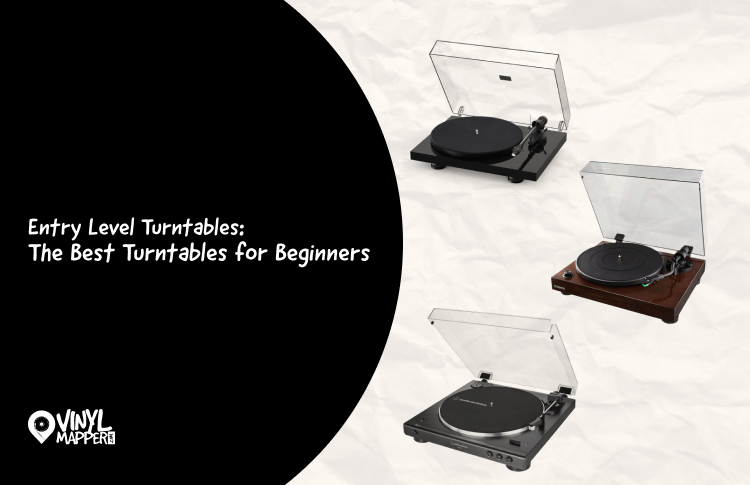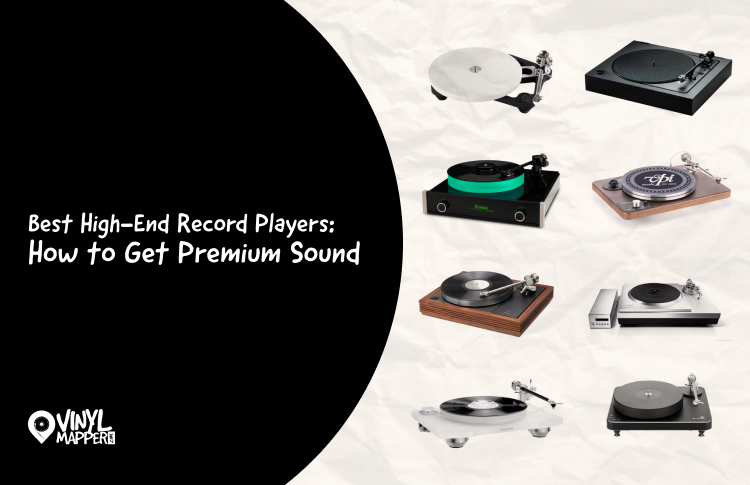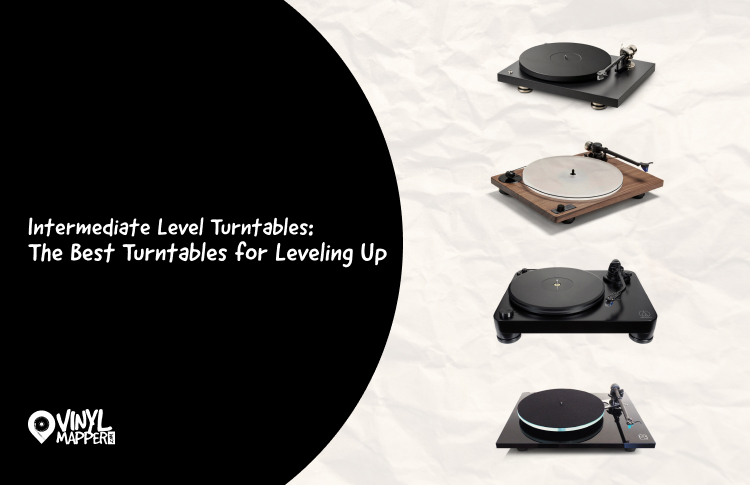
Everything You Need to Know About LP & EP Records
With vinyl surging in popularity in recent years, many newcomers are still trying to figure out what all the lingo means.
One question often asked by newbies is: what’s the difference between LP vs. EP records? Read on to learn everything you need to know about LP and EP records!
LP vs EP Defined
LP Records
LP stands for “long play.” LP records are physically larger, and hold enough music to house entire albums or about an hour.
EP Records
EP stands for “extended play.” EP records are physically smaller, and typically only hold 1-2 songs plus an occasional bonus track or two.
The Origin of LPs and EPs
Between 1948-1950, Columbia Records and RCA Victor fought what is known as “The War Of The Speeds” to popularize each of their record formats.
In 1948, audio engineer Howard H. Scott and Columbia Records made 12-inch diameter vinyl records, which spun on record players at 33⅓ RPM (rotations per minute). Each 12-inch record could hold around 30 minutes of music on each side, or 1 hour of music in total.
In 1952, their competitors, RCA Victor, made 7-inch records that spun at 45 RPM. These shorter, smaller records contained around the same amount of music as old 10-inch, 78 RPM records, which were the first ones to be made in the first half of the 1900s. (Today, 78 RPM records are essentially obsolete, and are no longer made.)
So ultimately, both competitors won, because each record could be used for different purposes. Columbia’s 12-inch record became the LP, and RCA’s 7-inch record became the EP.
Spinning LPs vs. EPs

Vinyl Lovers Embrace the Differing Listening Experiences
Vinyl veterans and newcomers alike can find something to enjoy about both LPs and EPs.
The LP Listening Experience
When you spin an LP record, you can sit back and enjoy the full virtuosity of your favorite music in a continuous flow, with the warm analog sound that characterizes vinyl.
Since the 40s, LPs have always been the preferred format for entire albums, meaning artists recorded their works specifically with the intention for them to be played in this format. That’s why Pink Floyd’s legendary records like The Dark Side Of The Moon and The Wall flow so perfectly from one song to the next. Pick up any jazz LP ever made for more fantastic examples of this.
But sometimes, you just want the hits, and that’s when you should bust out the EPs.
The EP Listening Experience
When you buy an EP, you’re buying an entire disc devoted to one of your favorite tracks. Besides the record, it also comes with unique cover art, and some B-Side rarities that you wouldn’t want to miss from your favorite artists. Sometimes, B-Sides contain songs that haven’t been released anywhere else — you have to buy the EP to hear them.
Tracks on the B-Side can help provide an interesting context for the songs on the A-Side, and vice-versa. This can make EPs compelling works of art, providing a backdrop for the biggest hits. As an example, think of the difference between The Beatles’ “Hello, Goodbye” (A-Side) and “I Am The Walrus” (B-Side), or “Get Back” (A-Side) and “Don’t Let Me Down” (B-Side).
In sum, every record collection should include both LPs and EPs. LPs are the classic albums that you can spin in one go on 12” vinyl, whereas EPs provide interesting flavors of your favorite songs, made on 7” vinyl.
Featured Reading

Need more storage for your growing vinyl collection? Here are some awesome ideas.
Vinyl LP vs EP Compared

Technology Behind Vinyl Records and Differences Between LPs & EPs
LP (long play) vinyl records are larger and contain more music than their EP (extended play) cousins. This has to do with vinyl technology, and the physical size of the record.
Vinyl records store sounds using microscopic subtleties in the patterns of their grooves. When you play a record on a record player, a stylus reads the tiny variations and transmits them as an electrical signal, which is sent to an amplifier and is translated into music.
Since the music is stored in grooves, it makes sense that the more grooves you have, the more music you can store.
So when it comes to LPs vs. EPs, their different sizes mean they have different lengths and uses. You can fit more grooves, and more music, on a larger record.
Physical Size Difference
- LP Record Size: LPs are typically 12-Inch diameter vinyl records.
- EP Record Sizes: EPs, on the other hand, are usually 7-Inches in diameter but occasionally are found in 10-Inch formats.
Runtime Difference
- LP Runtime: LPs typically hold up to 30 minutes of music on each side, or one hour of music in total, making them perfectly suited for most studio albums.
- 7-Inch EP Runtime: EPs can hold around 5 minutes of music on each side, or 10 minutes in total. EPs have always been the preferred format for singles. Singles are individual track releases for additional promotion, like a hit song from an album.
- 10-Inch EP Runtime: Occasionally, you can also come across EPs that are 10-inches in diameter, holding up to 30 minutes of music in total, sort of like a half-album.
Play Speed Difference
- LP Play Speed: LPs that spin at 33⅓ RPM (Rotations Per Minute).
- 7-Inch EP Play Speed: EPs spin at 45 RPM.
Final Thoughts on LPs and EPs
No matter which format you favor, LPs and EPs have different places in the music world, and vinyl lovers will enjoy having both in their record collection.






